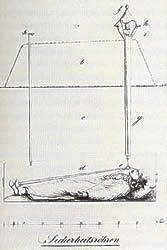
In Africa, World War I dawned with a buzz and a howl. The British Indian Army was trying to sneak up on an eastern seaport held by the Germans when they disturbed huge hives of aggressive African bees, which drove them into the sea. “I would never have believed that grown-up men of any race could have been reduced to such shamelessness,” said a British officer. One engineer was stung 300 times.
The Times wrote that the bees had been sprung by the German commander, Paul von Lettow-Vorbeck. When asked about this, he merely smiled and said, “Gott mitt uns.”



